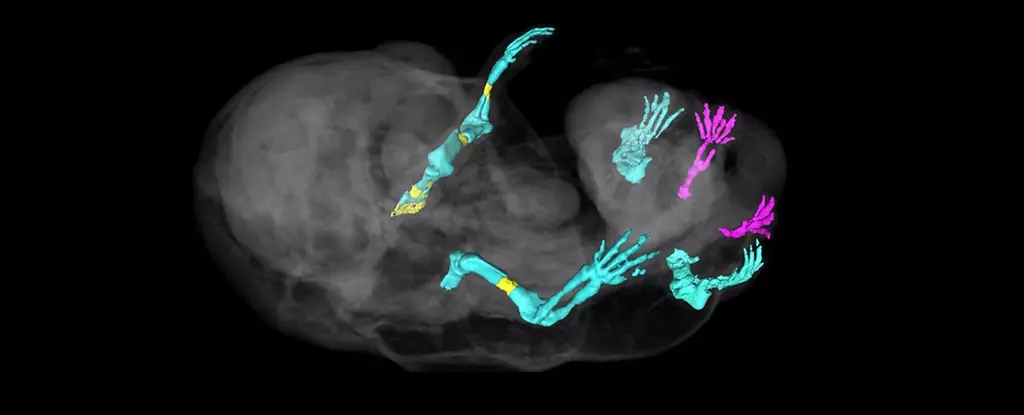Research conducted by developmental biologists Anastasiia Lozovska and Moisés Mallo at Portugal’s Gulbenkian Science Institute took an unexpected turn when they turned off a specific gene early in mouse development. This led to the creation of a six-legged embryonic mammal, sparking new avenues of exploration in spinal cord research.
The team’s investigation involved comparing mouse embryos aged 10 to 17 days with and without functional versions of the Tgfbr1 gene, responsible for encoding the Tgfbr1 receptor protein. This gene plays a crucial role in a signaling pathway that dictates the trunk-to-tail directions of a developing body, providing essential instructions for the formation of hindlimbs and external genitals in the embryo’s cells.
As mammalian embryos progress in growth, they sequentially build structures from the head to the tail. The early activation of genes shifts focus from the head to extending the body and laying the groundwork for major organs. Subsequently, a second transition occurs, activating genes across multiple tissue layers to extend the trunk and develop a tail. This process involves interactions between emerging tissues to form necessary structures for the body’s exit channels and genitalia.
Evidence from Genetic Analysis
Despite the abnormal placement of the extra legs in embryos lacking functional Tgfbr1, the genes expressed in these additional limbs resemble those found in typical mouse limbs. Both sets of limbs originate from the mesoderm layer of the early embryo, pushing out into the surrounding endoderm layer, potentially receiving signals to develop into mature limb structures.
Chromatin Remodeling Insights
Further examination of the DNA in mutant leg tissue revealed chromatin remodeling, where proteins controlling DNA access were reconfigured to promote leg development rather than genital formation. The precise mechanism behind the suppression of the Tgfbr1 gene leading to the emergence of extra legs remains unknown, emphasizing the need for deeper understanding of these fundamental processes.
By delving into the complexities of gene expression and developmental plasticity, researchers aim to gain insights into evolutionary adaptations and anomalies seen across species. The discovery of an accidental six-legged mouse embryo highlights the intricate genetic mechanisms at play during embryonic development, offering valuable knowledge for addressing developmental challenges and diseases in the future.



Leave a Reply